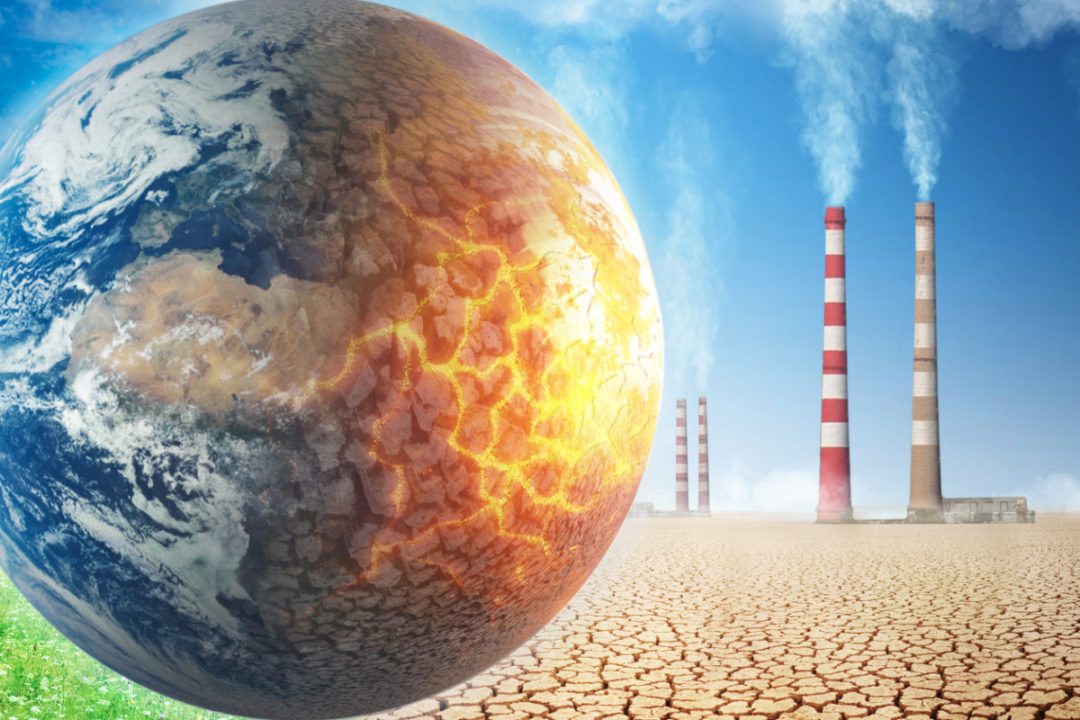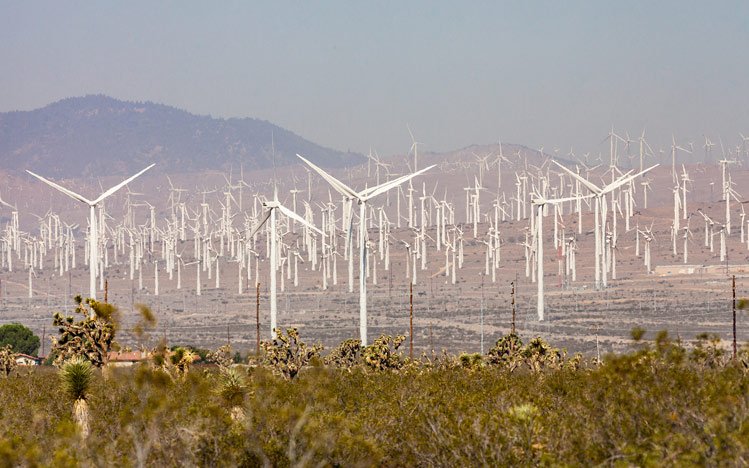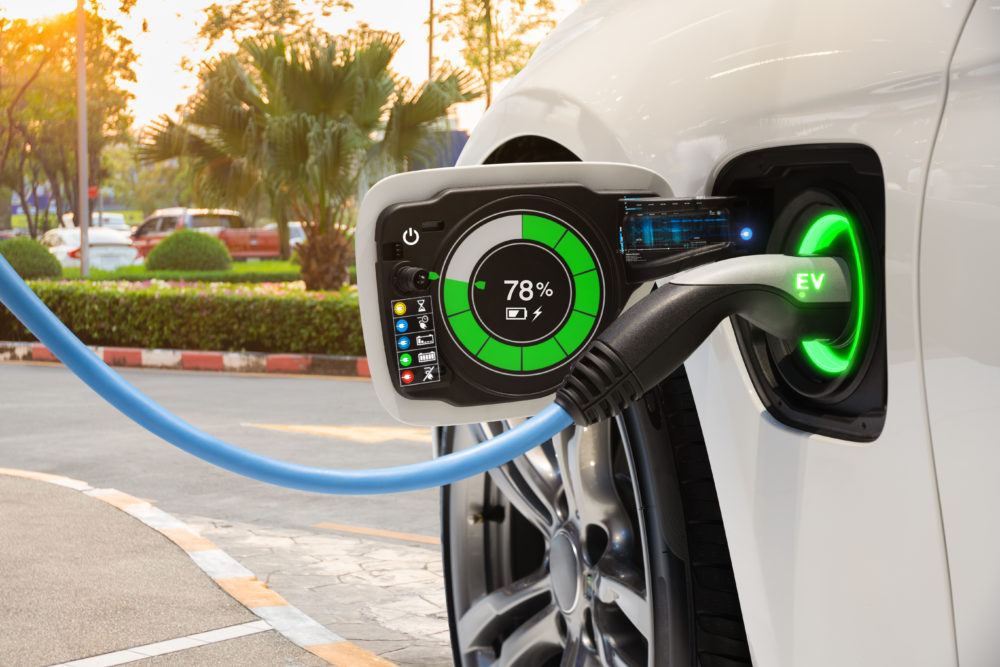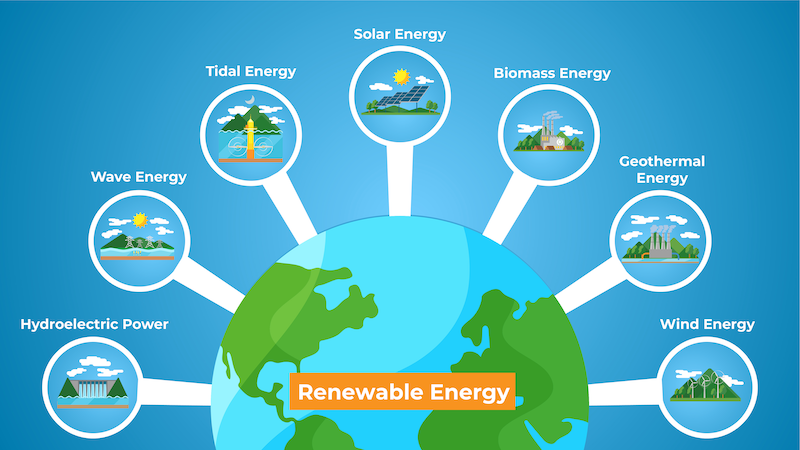‘Climate Change’: The Wrong Focus
The question of whether climate change is a man-made phenomenon whose sole cause is carbon dioxide particles in the atmosphere is not going to be addressed here.
That is the official narrative; and it is from this perspective that the inadequacy of the solutions offered is here demonstrated. Indeed, this perspective should also make everyone doubt the promises of salvation that are made to us, to ‘save the planet’.

This is probably fed by the fact that they believe they have found the solution to all this. And the solution is, of course, quite simple: ‘renewable’ energies and ‘sustainable’ technologies.
Everyone now knows what this means: if we simply generate our electricity from wind turbines, photovoltaics and hydroelectric power, and drive electric cars instead of the dirty gasoline and diesel vehicles, then everything will be fine—or so we are regularly told. But is that really the case?
‘Dirty’ Technologies
The problem with renewable energies is that they are not renewable. Of course, wind is always blowing somewhere in the world, and the sun will continue to shine for several billion years. Yes, and even water flows incessantly. The energy sources are therefore not the problem. The situation is quite different, however, with power plants. Wind turbines have to be built first, as do solar cells and hydroelectric power plants.
In the process, the most toxic processes that industry has to offer are used. This begins right with the mining of the required resources. Here, aluminum, copper, gold and the so-called “rare earths” are needed in large quantities. In other regions of the world, the mining of these raw materials destroys entire regions.
Wind turbines, for example, require more metal than any other type of power plant. Rare earths, such as neodymium, are also used here. When this material is mined, large areas of whole regions become contaminated. The same applies to metals and rare earths in general. In addition, wind turbines contain large quantities of plastic resins as well as glass fibers.
This poses a huge problem of disposal. After all, the average life of a wind turbine is 20 years. After that, it has to be dismantled—but recycling plastic resin and glass fibers is not possible.
Composite materials, such as those used on the turbines, cannot be separated again and are therefore simply disposed of somewhere. This creates a huge disposal problem with disastrous consequences.
But wind turbines also pose an ecological problem during their lifetime and even before. This is exemplified in the documentary film, Headwind 21, by Marijn Poels. The filmmaker accompanies an activist in Sweden who fights against the deforestation of the pristine forests in the north of the country.
The deforestation is being done to make way for a wind farm. For this, entire forests are cleared over a huge area. Often the ground must also be prepared by blasting, before even wind turbines can be placed at all. Large areas of land are completely destroyed in this way just for a few wind turbines.
And this wind-farm will not even serve the country of Sweden, but is being built to supply a newly developing technology park in Finland. Thus, energy that was previously obtained from fossil fuels is not simply obtained in an ostensibly renewable way, but an additional energy demand is covered.
This is simply added on top of the previous energy demand. Thus, nothing is gained by the wind turbines—but more of nature is destroyed to gain additional energy—when nature is an important carbon sink that absorbs our emissions.
In addition, wind turbines extract moisture from the soil and additionally warm the ground, which leads to droughts. The wind turbines erected in Germany through 2018 alone have given the country an additional 0.27 degrees Celsius temperature increase as a result—and that’s in just five years. Erecting even more of them, and clearing forests to do so, is absurd—if the fight against ‘climate change’ were really the issue.
Wind turbines also endanger birds and bats. These are often killed by the rotor blades, as they cannot anticipate this danger. In addition, people and nature are exposed to noise or infrasound, which can lead to illnesses, such as cancer and cardiovascular disease.
In close proximity to residential areas, cast shadows also pose a problem. The constant change from light to dark and back again, the so-called “strobe-effect,” is a strain on every organism, be it human, animal or even plants in the field.
Photovoltaic plants or hydroelectric power plants also rely on substances that are highly toxic and whose degradation entails great destruction of nature.
There is also the problem that when demand fluctuates, utilities shut down wind turbines first because it is much more profitable to run nuclear power plants, which can also cover the base-load of the grid.
In the documentary Planet of the Humans produced by Michael Moore, all the madness associated with renewable energy is illustrated. Moore shows how power plants have to be started with the help of fossil fuels; how solar plants are built in the desert and then deteriorate—and most importantly, all the destruction associated with mining the materials needed for so-called renewable energy.

Hydroelectric plants also create another problem that wind turbines and solar plants do not. This is because entire rivers are often dammed for such a hydroelectric plant. This interrupts the natural course of rivers, and animals such as salmon can no longer swim up and down the river unhindered. But they have to, because they usually live on the lower course of the river or in the ocean and only return to the upper course of the river to spawn.
This spectacle, called migration, can be witnessed every year unless the rivers are dammed. The dams present insurmountable obstacles for the salmon. After spawning, they often die and are then dispersed by the current in the floodplains and in the course of the river. This makes them an important food source for other animals, bringing nutrients from the ocean up the river.
The natural flow of these nutrients is also interrupted by the dams, causing sediments to pile up on them that were supposed to reach the lower part of the river. In this way, dams kill the water body as well as the life around them.
Mobility
Another aspect that is always mentioned in connection with ‘climate change’ is electromobility. This has been increasingly promoted in recent years. Tesla built a plant specifically for this purpose in Grünheide near Berlin.
But electromobility is not as clean as it might seem. A lot of plastics and metals are also used here. These vehicles are virtually bursting with electronics, the effects of which on the environment have actually been known for a long time.
Then there are the highly toxic batteries needed for these vehicles, because they contain, among other things, lithium, the mining of which is highly damaging to the environment.
For example, there are large lithium deposits in South America, especially in Bolivia, Argentina and Chile. There, the light metal is extracted from salt water by pumping it to the surface from great depths in salt lakes and evaporating it.
Chemicals are then used to separate the lithium from the salt and other substances. What remains is a chemical-salty solution that contaminates the surrounding groundwater.
Many people have already lost access to drinkable groundwater in this way, and the regions are becoming increasingly desolate. The chemicals, especially heavy metals, are also spreading in the area, causing livestock to die. In addition, since the water from the rivers is used for drinking and to irrigate the fields, agriculture is no longer possible in these regions. However, the increasing demand for lithium means that more and more new deposits are being developed in previously untouched regions.
The residents of the plant in Grünheide are currently experiencing what the production process of the vehicles means in itself. This region, which has already been struggling with a shortage of drinking water for some time, is now experiencing a further worsening of the situation. Large quantities of water are also needed to assemble the vehicles.
For this reason, the local authorities have already set an upper limit for water consumption. If this is exceeded, fines are imposed. However, Tesla is probably not affected by this, otherwise the company would not have settled there. The company is allowed to use vast amounts of water for the construction of environmentally harmful vehicles and batteries, while local residents have to think twice about every shower.
There was also a recent accident there in which toxic paint leaked out. According to Tesla, this could allegedly be completely removed and did not reach the environment. However, it should be common knowledge as to what to make of such statements on the part of the manufacturer.
It also shows that there is a potential for environmental catastrophes here, should the accident or leak ever turn out to be somewhat larger. In addition, the use of toxic paint shows how far off the environmental friendliness of the vehicles really is.
Finally, the disposal of the vehicles causes considerable difficulties. Once again, the batteries are a major factor here, as they are pure poison for nature. In addition, as with all supposedly renewable technologies, there is the energy-cost of production.
For example, the emissions backpack of every electric car ex-works is already twice as large as that of a conventional car.
In addition, it has to be charged with energy again and again. If the proportion of electric cars increases, the energy requirement also rises automatically.
This energy, however, is usually obtained from fossil fuels or nuclear power plants. Thus, for the feeling of clean driving, whole swaths of land are polluted elsewhere and fossil fuels are extracted and burned.
Electric cars are thus not one bit clean or environmentally friendly. Quite the opposite.

The fact that governing politicians cling to the so-called renewable or green technologies—despite all this destruction—has a simple reason: It’s a business.
Elon Musk, owner of Tesla, is now one of the richest people on earth for a reason. Thus, under the guise of saving the world, a market is being created that promises big sales but destroys nature on a large scale. There is also the reason why this meets with so little opposition—the focus on ‘climate change’ and thus on carbon dioxide as the only factor.
For a long time now, the issue of ‘climate change’ has been decoupled from that of environmental protection. Supposedly, ‘climate change’ is the biggest threat of all—the contamination and destruction of nature plays no role in the discussion.
The slogan is—carbon dioxide fuels ‘climate change’, it will destroy us all, therefore we must avoid every gram of carbon dioxide. The complex issue of nature destruction and environmental protection is thus reduced to a simplistic factor.
Through this narrow focus, people lose sight of the insane destruction that is being wrought. Yet even in the prevailing discourse, it is noted, albeit rather rarely, that the climate is a complex system—if we destroy nature, if we cut down forests as carbon sinks, if we poison the oceans or dry up the swamps, or if we persist in monoculture agriculture, then this has a negative impact on the climate.
Nevertheless, “carbon neutrality” is put forward as the only goal, and now also serves as a label for all kinds of products, so that consumers can get elude their complicity in the destructive system—at least in the way they feel—in a cheaply bought cleansing of conscience, a kind of “indulgence trade.”
At the same time, the blame for everything in this way is actually shifted solely onto the individual consumer, who through his or her choices would have the opportunity to influence the system in such a way that it would promote environmentally friendly alternatives, which of course is not the case.
This is because the individual is always faced with a fait accompli in the supermarket or wherever, and has no way of influencing the manner of production, nor any control over the quantity produced. But by means of eco-labels and product descriptions as “climate neutral,” the impression is created that the consumer is contributing to saving the world with his choice.
Distraction
The real question is quite different: Why do we fixate on a single substance and strive to reduce its emissions at all costs, only to avert something that, according to all the IPCC reports, can already no longer be averted?
Why are people encouraged to buy an electric car or reduce their electricity consumption, but not being prepared to live in a world where ‘climate change’ is happening right now? Why are we not preparing for floods, for droughts? Why are we not adapting agriculture to these conditions, our cities, our work? Now, some would suggest that this adaptation is not taking place because ‘climate change’ either does not exist or is not man-made.
And yes, it is also very striking that while the common person is to be educated with a moral finger to save energy, industry and industrialized agriculture blithely continue to consume energy.
But the explanation is probably quite simple: A transformation of our society, an adaptation to a changed world, which perhaps really switches off the destruction of nature and uses drastically less energy, is simply not economical. Because capitalism would then actually have to be abolished, and supply would have to be ensured locally again.
That doesn’t suit those who, in the current system, make very large profits from destroying nature, producing useless goods and shipping them all over the world. Focusing on carbon dioxide and its removal, on the other hand, makes a veritable business out of wind turbines, solar panels and electric mobility. As a result, the debate focuses on these, rather than addressing the real causes of nature’s destruction.
And, of course, many of the arguments put forward here also apply to fossil energies or nuclear power. For these, too, nature is destroyed, air, land and water are polluted, and what is to be done with the nuclear waste is still not clear after 70 years of nuclear power. But instead of causing more destruction for a technology that does not solve the problems of our time, we should turn to the causes.
Only a society that gets by with a minimum of energy consumption, that focuses on what is really necessary for life instead of constantly throwing new, useless products onto the market, is truly acting ‘sustainably’.
To do this, we also have to say goodbye to something that so many still believe in: the idea of eternal progress that would improve our lives. Progress, that is technical innovation, new products and developments. But it is precisely this progress that has led to the problems of the destruction of nature, the extinction of species, plastic waste and sewage and waste in the first place.

The example of so-called renewable technologies shows where all this leads to, where wanting to eliminate the destruction caused by this progress is only through further progress. Moreover, it is a false idea of progress that is being marketed here. Because progress is also reduced to marketable products. Progress is therefore only what can be sold. Social developments, up to a frugality that makes all these goods superfluous, do not appear in this belief in progress.
The history of this progress has shown, however, that it knows no end. It only brings us more and more new problems, new devices and products that have to be consumed and then end up as waste in nature to keep a capitalist machinery going, which leads us to ruin and hardly improves our lives.
Which is not to say, of course, that every discovery and development is exclusively negative. But we should separate ourselves from this unconditional dogma of eternal progress. After all, has the eleventh smartphone, the latest tablet or car really brought us any further or made us happier?
Do we live better because people can consume coffee to go, while walking or on the subway? Are we better off because technology corporations and governments can monitor us everywhere, that we are increasingly digitized in order to live?
True progress would be a social weighing, combined with a penchant for less, a frugality that is at peace with itself and the world.
However, this should not be a frugality decreed from above, a “Great Reset” that drives this society with momentum against the wall and claims countless victims in the process.
On the contrary, a truly human transformation can only come from below, from the people who are affected by it themselves, who are fed up with a life on the hamster wheel, as a cog in the wheel.
Author: Felix Feistel
yogaesoteric
October 3, 2022

